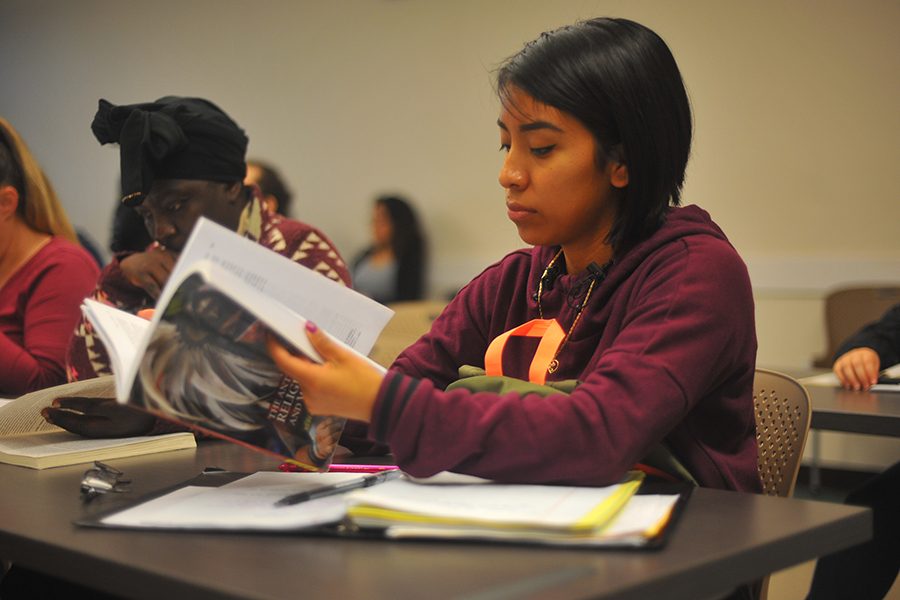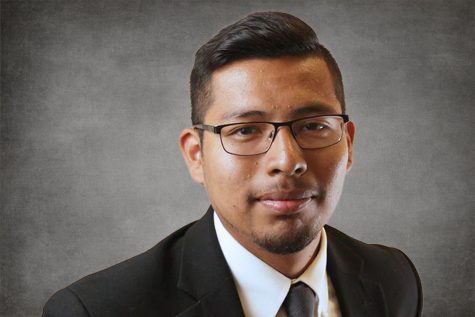Magic, witchcraft, religion breaks taboo
Medical assistant major Diana Lapop flips through pages of the Anthropology of Religion, Magic and Witchcraft textbook during an Anthropology 150 class session in GE-311 on Thursday. The class reviewed witchcraft in European villages.
Apr 18, 2017
Magic, witchcraft and religion are often taboo and unfit for the educational system, but Anthropology 150 examines the social science behind these cultural practices.
For students, like math major Aldo Hernandez, taking Magic, Witchcraft and Religion (Anthropology 150) is interesting because of the subjects the general education class addresses.
Hernandez said he expected to learn all about different types of magic, but soon began to gain a deeper understanding about the cultural impact of magic, witchcraft and religion on the people around it.
Anthropology professor Nefertari Hawthorne said magic, witchcraft and religion, if seen as more than what popular culture depicts them as, explain the culture of those who practice them.
Student Johnny Delgado said misogynistic societies still exist today, as before, when old belief systems allowed religion to oppress women.
He said that the class addresses the time period when women were persecuted and accused of witchcraft when they did not conform to a misogynistic society.
He said traditions like these are still around, and this class gives a better understanding of them.
Social science major Chris Mariero said the class gives students a whole new outlook on the world.
He said society traditionally does not give explanations as to why things are like they are. This history, learned in the classroom, is interactive with what is going on today.
When he discusses political topics with others personally, or in other classes, he is able to bring it back to something talked about in Anthropology 150, Marriero said.
He said because students have to discuss and write about the material, they must be able to interpret it to be able to speak on it.
Mariero said that anyone thinking about taking the class should be prepared to research and “to push your boundaries of understanding the world.”
Hawthorne said students should come in with an open mind.
“When I ask my students in Anthropology 150 what magic is, they usually answer with Harry Potter or the Wizard of Oz,” she said.
The course’s goal is to break misconceptions and educate students so they have an understanding of why people in the past practiced the old traditions like the indigenous people of North America, and why modern societies still practice these rituals and beliefs at the macro and micro level.
The class offers students an opportunity to engage in discussions, watch films, read relevant material, hear lectures and conduct research projects on cultures like the Navajo tribes of North America, who practiced magic, or the rural European villages, that hunted witches.
Hawthorne said, “The context of the class is that magic is real.”
When students realize this they are able to take what they learn outside of class she said.
Cultural anthropologist Ebinue Barnett said she has been practicing dance since she was eight years old. Two years ago when her grandmother died she began to dance an Afro Cuban dance, the Babalu-Aye.
She said the dance, like magic, lightened her spirit and made her feel good emotions at a level she hadn’t felt in other dance.
She said it wasn’t until two years later in this class that she learned that the Babalu-Aye dance’s history is tied to healing and mourning.
There are stories and meanings behind the world’s traditions, she said.



